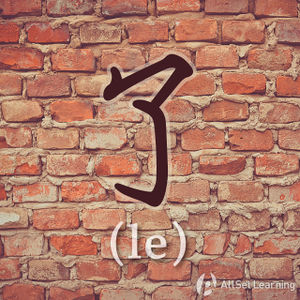Difference between revisions of "Expressing "more and more" with "yuelaiyue""
| Line 3: | Line 3: | ||
"越 ⋯⋯ 越⋯⋯" (yuè...yuè...) is used frequently in Chinese to express that some quality or state is increasing with time, or in tune with another factor. There are two forms of this pattern, the "simple" one (using 来), and the more complex one (which uses two different adjectives/verbs). | "越 ⋯⋯ 越⋯⋯" (yuè...yuè...) is used frequently in Chinese to express that some quality or state is increasing with time, or in tune with another factor. There are two forms of this pattern, the "simple" one (using 来), and the more complex one (which uses two different adjectives/verbs). | ||
| − | == | + | == Using 越来越 before an Adjective == |
This structure expresses that something is becoming more and more ''[[adjectives|adjective]]'' over time, with the latter adjective changing with the verb. The most common structure is: | This structure expresses that something is becoming more and more ''[[adjectives|adjective]]'' over time, with the latter adjective changing with the verb. The most common structure is: | ||
| Line 24: | Line 24: | ||
*汽油 <em>越来越</em> 贵 了。<span class="pinyin">Qìyóu <em>yuèláiyuè</em> guì le.</span><span class="trans">Gasoline is getting more and more expensive.</span> | *汽油 <em>越来越</em> 贵 了。<span class="pinyin">Qìyóu <em>yuèláiyuè</em> guì le.</span><span class="trans">Gasoline is getting more and more expensive.</span> | ||
*上海 的 房价 <em>越来越</em> 高 了。<span class="pinyin">Shànghǎi de fángjià <em>yuèláiyuè</em> gāo le.</span><span class="trans">The housing price in Shanghai is getting higher and higher.</span> | *上海 的 房价 <em>越来越</em> 高 了。<span class="pinyin">Shànghǎi de fángjià <em>yuèláiyuè</em> gāo le.</span><span class="trans">The housing price in Shanghai is getting higher and higher.</span> | ||
| − | |||
| − | |||
| − | |||
| − | |||
| − | |||
| − | |||
| − | |||
| − | |||
| − | |||
| − | |||
| − | |||
| − | |||
| − | |||
| − | |||
| − | |||
| − | |||
| − | |||
| − | |||
| − | |||
| − | |||
| − | |||
| − | |||
| − | |||
| − | |||
| − | |||
| − | |||
| − | |||
| − | |||
| − | |||
| − | |||
| − | |||
| − | |||
| − | |||
| − | |||
| − | |||
| − | |||
| − | |||
| − | |||
| − | |||
| − | |||
| − | |||
| − | |||
| − | |||
| − | |||
| − | |||
| − | |||
| − | |||
| − | |||
| − | |||
| − | |||
| − | |||
| − | |||
| − | |||
| − | |||
| − | |||
| − | |||
| − | |||
| − | |||
| − | |||
| − | |||
| − | |||
| − | |||
| − | |||
| − | |||
| − | |||
| − | |||
| − | |||
| − | |||
| − | |||
| − | |||
| − | |||
| − | |||
| − | |||
| − | |||
| − | |||
| − | |||
| − | |||
| − | |||
| − | |||
| − | |||
| − | |||
| − | |||
| − | |||
| − | |||
| − | |||
| − | |||
| − | |||
| − | |||
| − | |||
| − | |||
| − | |||
| − | |||
| − | |||
| − | |||
| − | |||
| − | |||
</div> | </div> | ||
Revision as of 04:15, 23 November 2016
-
Level
-
Similar to
-
Used for
-
Keywords
"越 ⋯⋯ 越⋯⋯" (yuè...yuè...) is used frequently in Chinese to express that some quality or state is increasing with time, or in tune with another factor. There are two forms of this pattern, the "simple" one (using 来), and the more complex one (which uses two different adjectives/verbs).
Contents
Using 越来越 before an Adjective
This structure expresses that something is becoming more and more adjective over time, with the latter adjective changing with the verb. The most common structure is:
Structure
Subj. + 越来越 + Adj. + 了
Examples
- 天气 越来越 冷 了。The weather is getting colder and colder.
- 你 女儿 越来越 漂亮 了。Your daughter is getting more and more beautiful.
- 你 做 的 菜 越来越 好吃 了。The food that you cook is more and more delicious.
- 汽油 越来越 贵 了。Gasoline is getting more and more expensive.
- 上海 的 房价 越来越 高 了。The housing price in Shanghai is getting higher and higher.
See also
Sources and further reading
Books
- Common Chinese Patterns 330 (汉语常用格式330例) (pp. 295) →buy
- Integrated Chinese: Level 1, Part 2 (3rd ed) (pp. 153-4) →buy
- Integrated Chinese: Level 2, Part 2 (pp. 288-9) →buy
- Modern Mandarin Chinese Grammar: A Practical Guide (pp. 238-9) →buy
- New Practical Chinese Reader 3 (新实用汉语课本3) (pp. 185) →buy
- 40 Lessons for Basic Chinese Course (基础汉语40课下册) (p. 340)→buy



